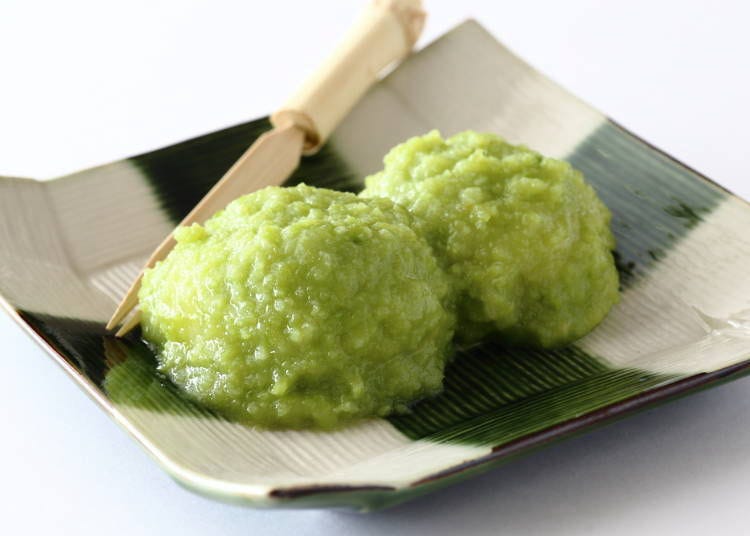
Adding something to your Japanese foods list? Make it unique - try a tasty Tohoku food from Japan's northeast!
The Tohoku region consists of six prefectures: Aomori, Akita, Iwate, Miyagi, Yamagata and Fukushima. Also with an abundance in nature and majestic landscapes, including the sea, mountains, and rivers, there are many ingredients born from the Tohoku Region’s local features.
Deliciously fattened beef and fresh seafood from the Sanriku Coast and the Sea of Japan. Fresh rice, vegetables, and fruits. And of course, with all these ingredients, there are also a number of local dishes born out of the harsh living environment of the cold weather, many that exquisitely make use of these ingredients. There are many charming aspects of the Tohoku Region.
Today, we’d like to introduce you to some of them, starting with some famous Japanese foods from Tohoku.
- Table of Contents
-
- 1. Senbei-jiru (Aomori Prefecture)
- 2. Oma-Maguro (Tuna) (Aomori Prefecture)
- 3. Ichigoni (Aomori Prefecture)
- 4. Kiritanpo (Akita Prefecture)
- 5. Inaniwa Udon (Akita Prefecture)
- 6. Babahera Ice Cream (Akita Prefecture)
- 7. Morioka Sandaimen (Morioka Reimen, Jajamen, and Wanko Soba) (Iwate Prefecture)
- 8. Iwate Tankaku Wagyu Beef (Iwate Prefecture)
- 9. Gyu-tan (Ox Tongue) (Miyagi Prefecture)
- 10. Sasa Kamaboko (Miyagi Prefecture)
- 11. Zunda Mochi (Miyagi Prefecture)
- 12. Imoni (Yamagata Prefecture)
- 13. Tama Konnyaku (Konjac Balls) (Yamagata Prefecture)
- 14. Kitakata Ramen (Fukushima Prefecture)
- 15. Enban Gyoza (Dumpling Disk)
- 16. Ika-ninjin (Fukushima Prefecture)
1. Senbei-jiru (Aomori Prefecture)
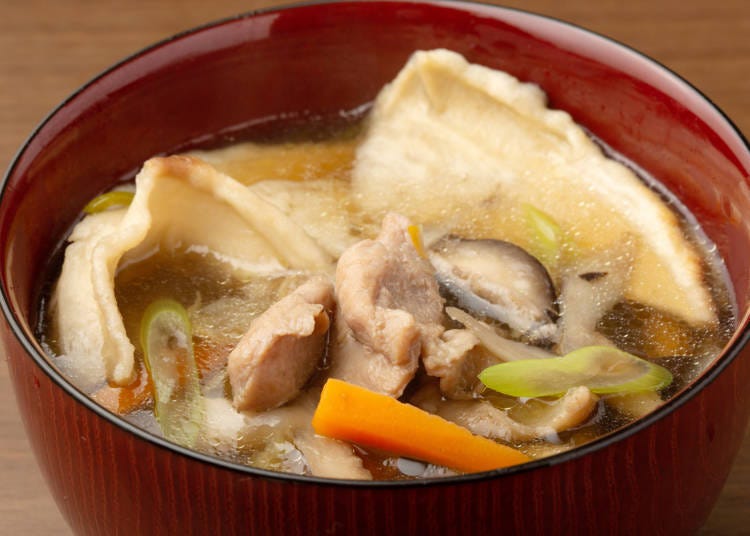
Senbei-jiru is a soup made with meat and fish, mushrooms, vegetables, and is a local dish from the Hachinohe Region of Aomori Prefecture. The crunchy senbei rice crackers have a texture similar to that of pasta and udon. You will definitely enjoy the rich texture and the taste of this soup.
2. Oma-Maguro (Tuna) (Aomori Prefecture)
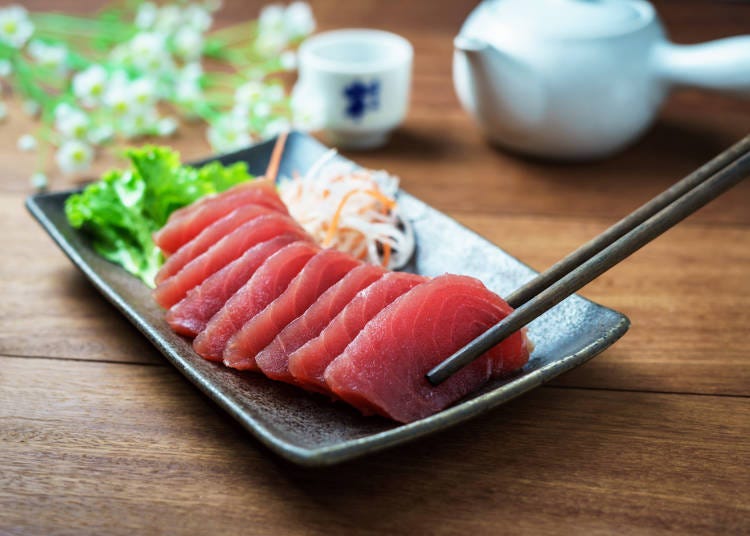
“Black Diamond” is a nickname given to the highest quality Bluefin Tuna, which is also known throughout Japan under the brand name “Oma-Maguro”. These tuna are caught using a single fishing pole, as opposed to using a net. With this method, the tuna is less likely to be scratched. The blood is removed before the tuna is weakened, so you can enjoy it prepared as high-quality, fatty sashimi.
3. Ichigoni (Aomori Prefecture)
”Ichigo-ni” is a local dish of Hashikamicho in Aomori Prefecture. The name of this soup, which includes sea urchin sinking in a milky white broth, is said to have been given because of its resemblance to a wild strawberry standing in the morning haze. The sea urchin and abalone are boiled and seasoned lightly with salt. You can taste the deliciousness of freshly caught seafood. In Aomori Prefecture, it is eaten on holidays and celebrations.
4. Kiritanpo (Akita Prefecture)
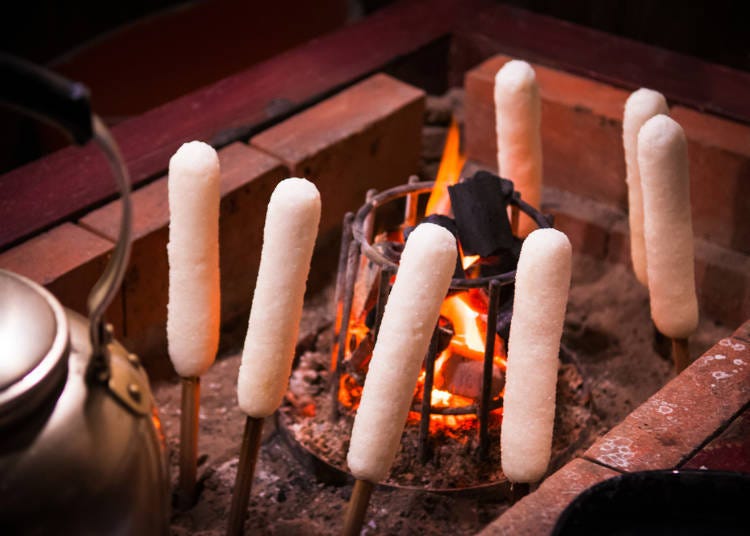
Kiritanpo is a grilled local specialty made from pounded rice in a cylindrical shape and wrapped with fine bamboo. It can be flavored and eaten with miso, or put it in a pot of soy sauce stock with burdock, parsley, mushrooms, and chicken, and eaten as Kiritanpo Nabe. Some shops even cook it over a fireplace. Enjoying this dish surrounded by such an atmosphere is just one of the ways to savor Kiritanpo.
5. Inaniwa Udon (Akita Prefecture)
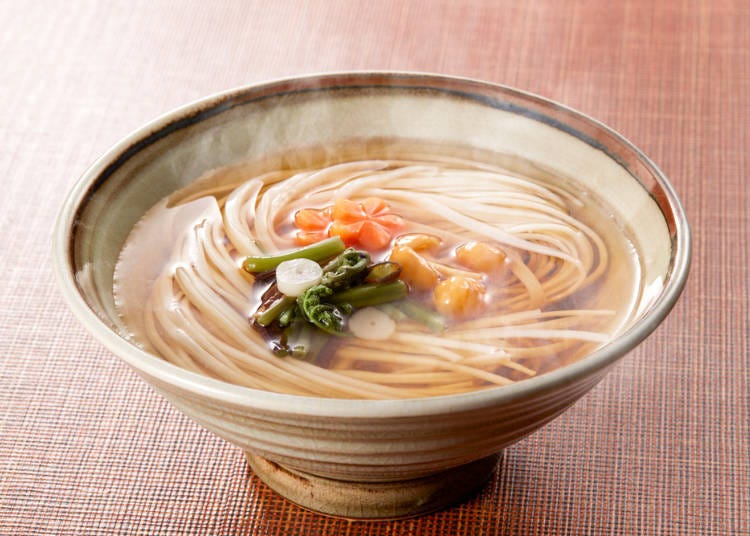
Inaniwa Udon was originally made as a preserved Tohoku food in the cold, snowy regions during the Edo Period. It is made with dried, hand-pulled udon noodles, all made by hand. The noodles are thick and firm with a smooth texture. It is also popular as a souvenir because of its long shelf life.
6. Babahera Ice Cream (Akita Prefecture)
When it comes to Akita's summer dishes, you can’t forget about "Babahera Ice Cream." The name "Babahera" came from the word “baba” referring to the old women who would serve this ice cream with a spatula. The salesperson arranges the ice in the form of flower petals while standing under a wheelbarrow with a parasol. The ice cream has a refreshing taste with a texture similar to sorbet. It is also interesting to compare the different tastes, which can vary depending on the seller.
7. Morioka Sandaimen (Morioka Reimen, Jajamen, and Wanko Soba) (Iwate Prefecture)
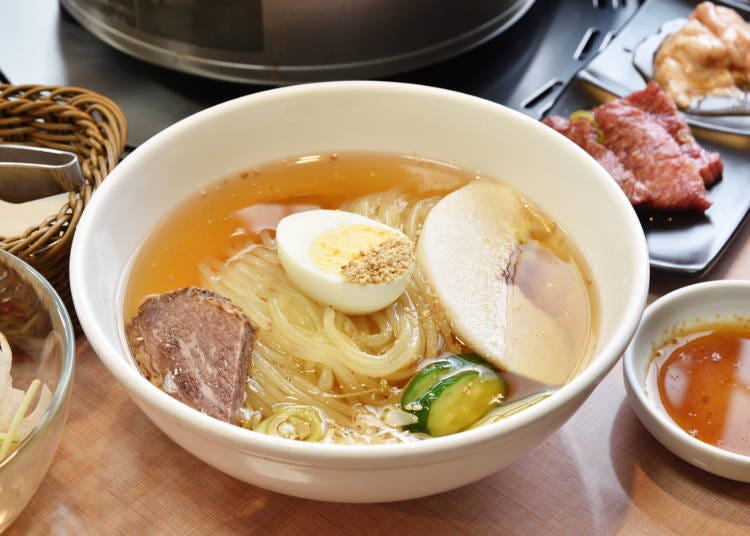
Morioka Reimen, Jaja-men, and Wanko-soba are known as the “Three Great Noodles” of Morioka City in Iwate Prefecture. Morioka Reimen is a cold noodle Tohoku food with semi-transparent, strong noodles and rich soup flavored with beef and chicken broth.
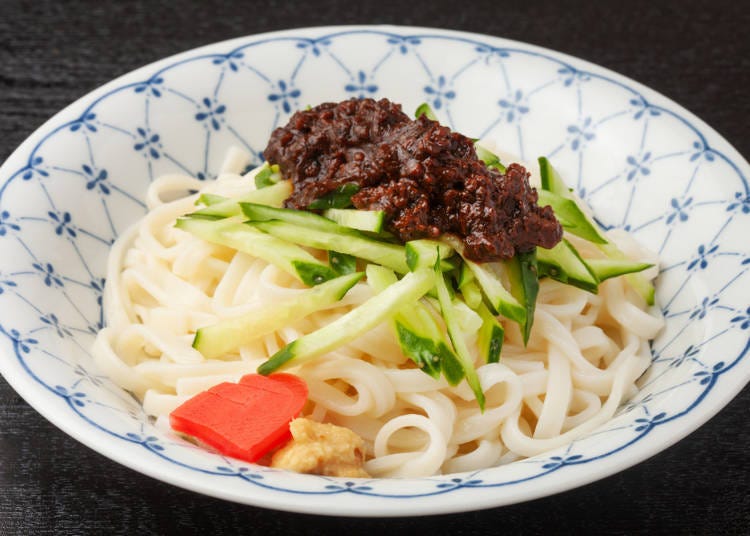
Morioka jaja-men is a mixture of plain noodles and miso-seasoned meat.
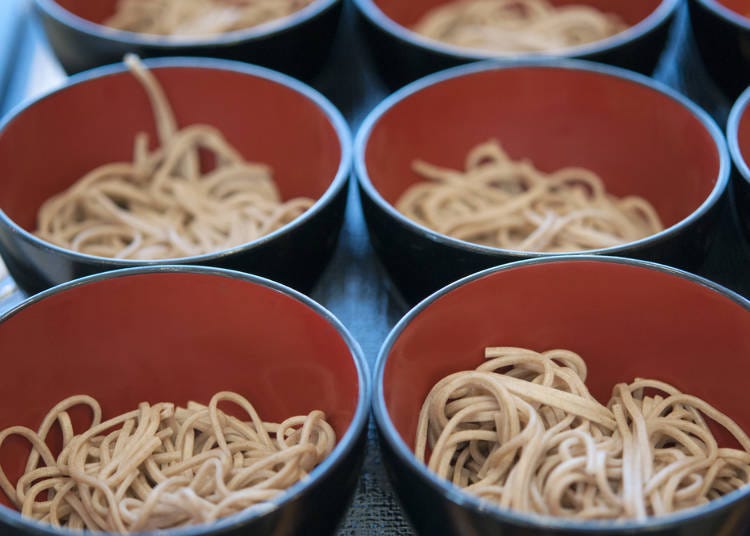
Wanko-soba is a fun Tohoku food to enjoy as you are served small bowls of soba noodles in succession, one after another. If you visit Iwate, be sure to try all three of these “great noodle dishes.”
8. Iwate Tankaku Wagyu Beef (Iwate Prefecture)
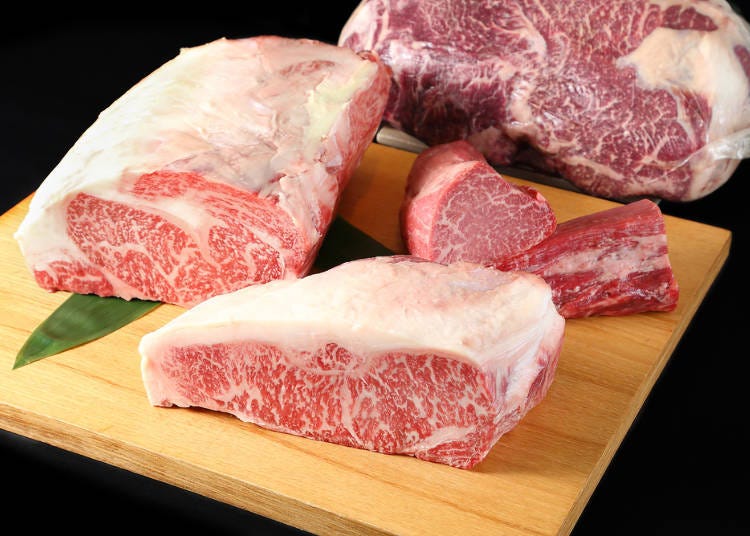
Iwate Tankaku Wagyu Beef is a high-protein, low-fat beef with a lot of amino acids that are the source of its “umami,” or flavor, which spreads even more as you chew each bite. Because of its low fat content, you can enjoy the chewy texture and the taste of meat in a way different from fatty, marbled meat.
9. Gyu-tan (Ox Tongue) (Miyagi Prefecture)
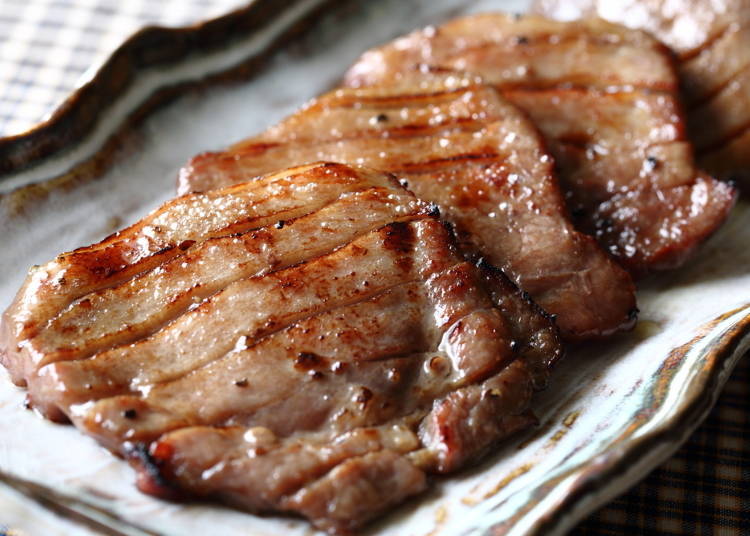
When it comes to Sendai City in Miyagi Prefecture, they are most famous for their “Gyutan,” or Ox Tongue dishes. This meat is thick with a delicious crispness. There are over 30 specialty shops in Sendai city, all of which have their own unique features, including the thickness and seasoning. It is a Tohoku food that you will never tire of, no matter how much of it you eat.
10. Sasa Kamaboko (Miyagi Prefecture)
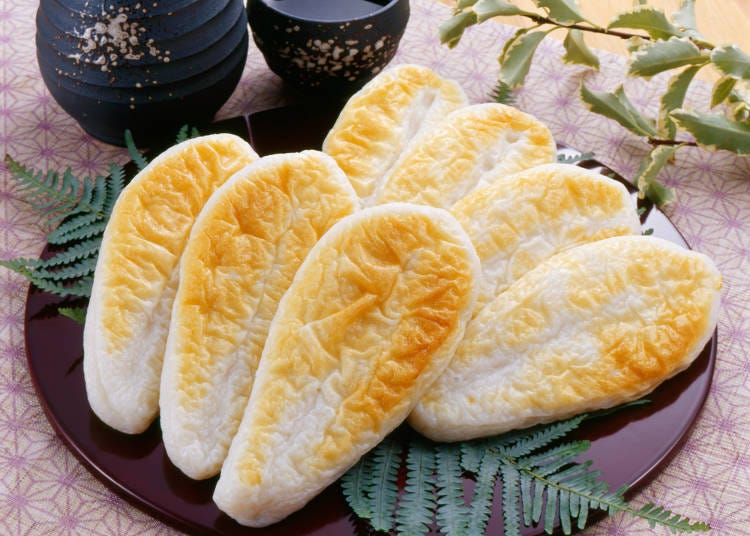
Sasa Kamaboko is a local Tohoku food from Miyagi Prefecture that is made with ground fish such as cod and sea bream, that is then shaped, skewered, nd grilled. Seasoned with fresh bonito and kneaded with mirin, sake, sugar, and egg whites, it is soft with a simple sweetness. It is also a popular souvenir item.
11. Zunda Mochi (Miyagi Prefecture)
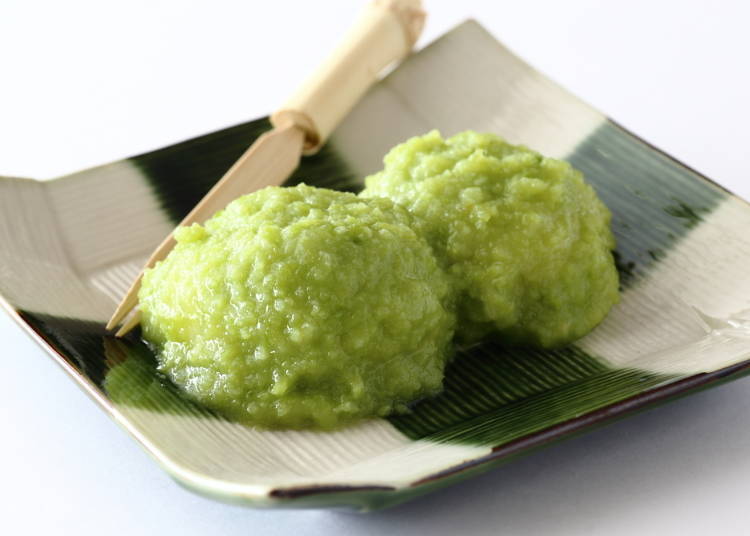
“Zunda" is a dish made from edamame, which is boiled to remove its thin skin, and then crushed with sugar, salt, and water, and formed into a paste. Zunda Mochi is a product made by covering the paste in mochi. Sendai is known for this popular local Tohoku food that is often enjoyed in the summer when edamame is harvested. It is delicious with a beautiful, light, yellowish-green color, and maintains the scent and texture of the green soybeans.
12. Imoni (Yamagata Prefecture)
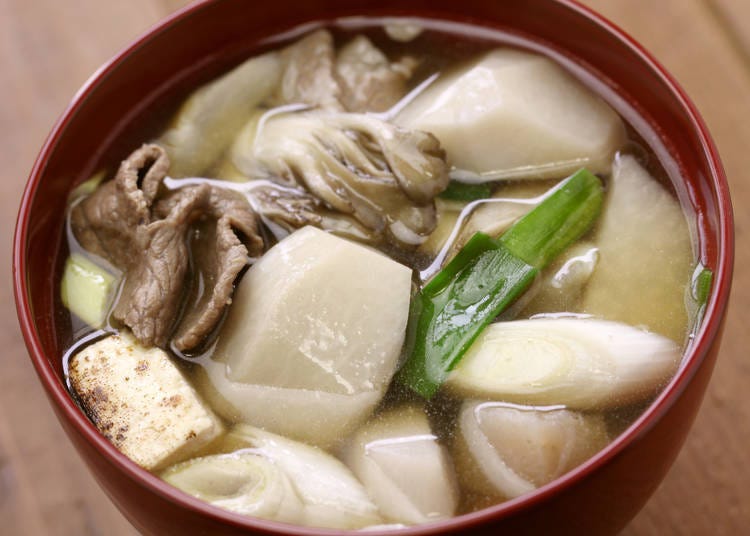
Imoni is a local traditional Japanese food from Yamagata Prefecture. The main ingredients are taro, beef, konjac and leek. It is often cooked using only local ingredients including the fresh, delicious water and vegetables of Yamagata, and Yonezawa beef. It is often eaten in the fall when taro is harvested. In the inland regions, it mostly features beef with a soy sauce base, and in the Shonai Region along the Sea of Japan, it is mostly served as pork in a miso base. Even within Yamagata Prefecture, you can experience different tastes that vary by region.
13. Tama Konnyaku (Konjac Balls) (Yamagata Prefecture)
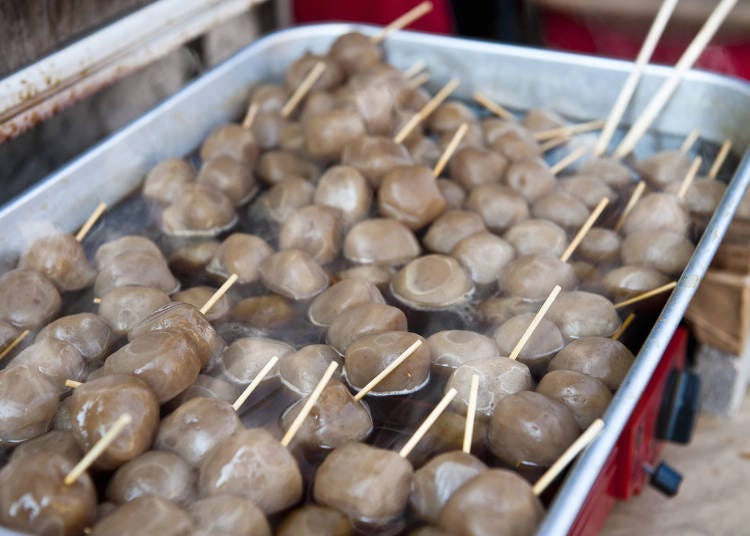
This is made from grated konjac that is boiled and kneaded, then hardened into a ball shape as it cools. It is a local gourmet unique to Yamagata, the number one konjac consumer in the country. It is simmered for a long time, resulting in its very deep and delicious soy sauce flavor. It is recommended to eat with mustard. As a skewered item, it is a popular Tohoku food to eat on the go.
14. Kitakata Ramen (Fukushima Prefecture)
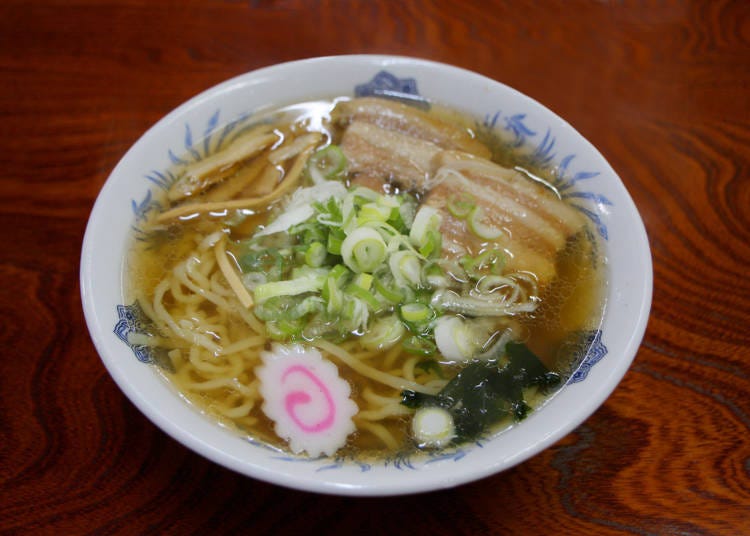
Kitakata Ramen is one of the “three great ramen dishes” of Japan. Compared to regular ramen noodles, this dish is characterized by its thick, flat, high-moisture noodles. The soup is a soy sauce base, and the pork slices are all prepared differently depending on the shop, so you can taste the uniqueness of each shop in every dish.
15. Enban Gyoza (Dumpling Disk)
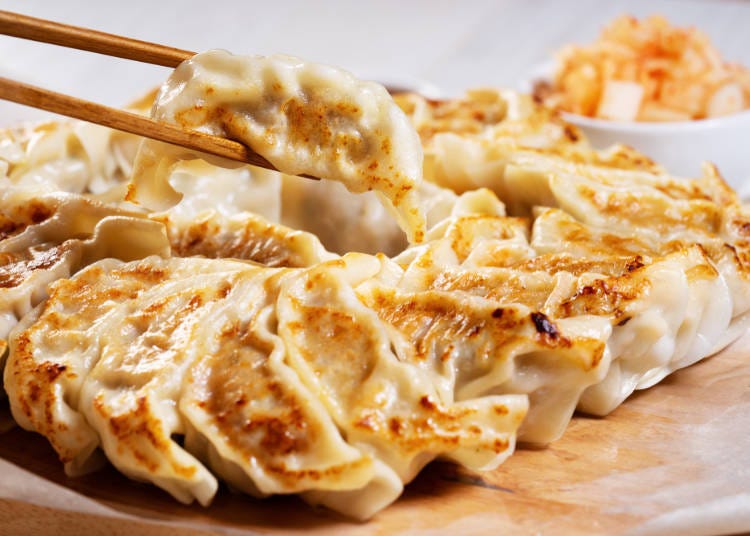
Dumpling Disk is a dish of dumplings cooked and arranged in a circular pattern. They are placed in a circle on the frying pan and baked into a disk shape when flipped over. They have a gentle sweetness from the vegetable and cabbage filling, and plenty of delicious juice from the cooked meat. It is baked without using too much oil, giving the outer dough an exquisite, crisp texture. Since individually they are rather small, as many as 20 to 30 can be eaten.
16. Ika-ninjin (Fukushima Prefecture)
“Ikanjin” is a favorite of Fukushima Prefecture, and an indispensable dish to enjoy during the New Year. By soaking the shredded carrots and squid in soy sauce, the umami of the squid is drawn out even more, and completes it with a flavorful, chewy texture. It is the perfect choice for a snack to enjoy with sake, as well as a side dish.
Text by: Takumi Miyamoto
- Area
- Category
*Prices and options mentioned are subject to change.
*Unless stated otherwise, all prices include tax.
Popular Tours & Activitiess
Recommended places for you
-
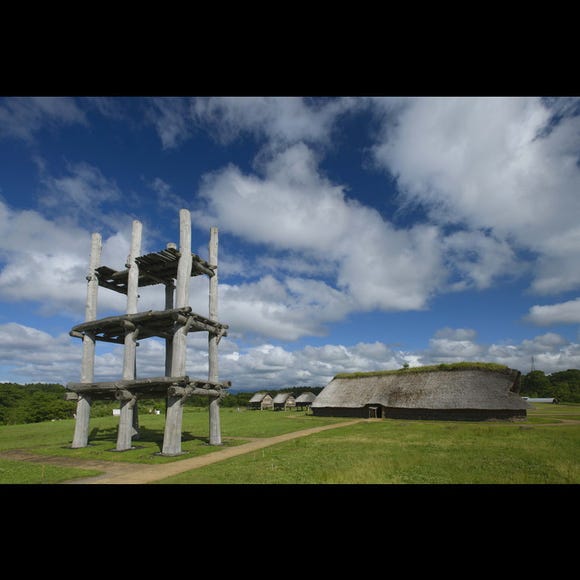
Sannai-Maruyama Site
Village Ruins
Aomori, Hirosaki And Hachinohe
-

Sendai Tanabata Festival
Japanese Festivals (Matsuri)
Sendai And Matsushima
-

Jiraiya
Other Japanese Food
Sendai And Matsushima
-
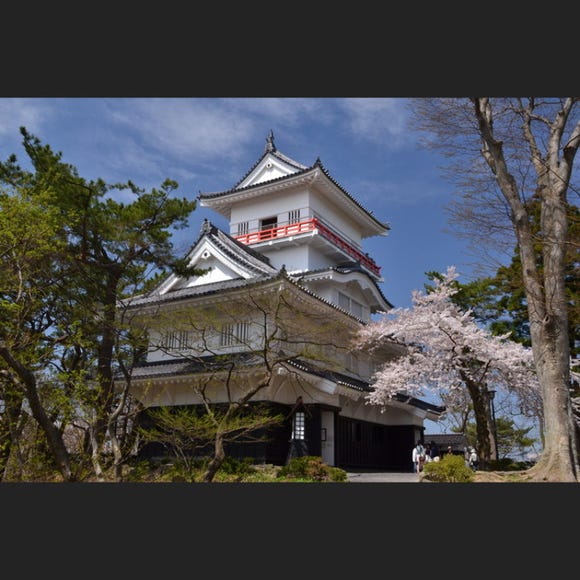
Senshu Park
Parks
Surrounding Areas Of Akita
-
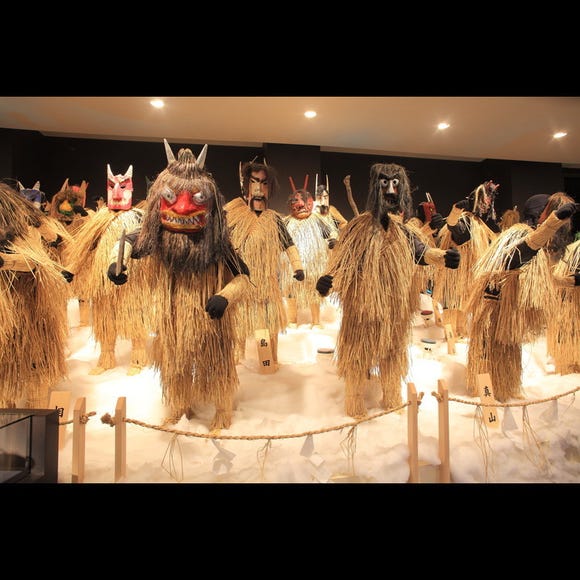
Namahage Museum
Other Museums
Surrounding Areas Of Akita
-
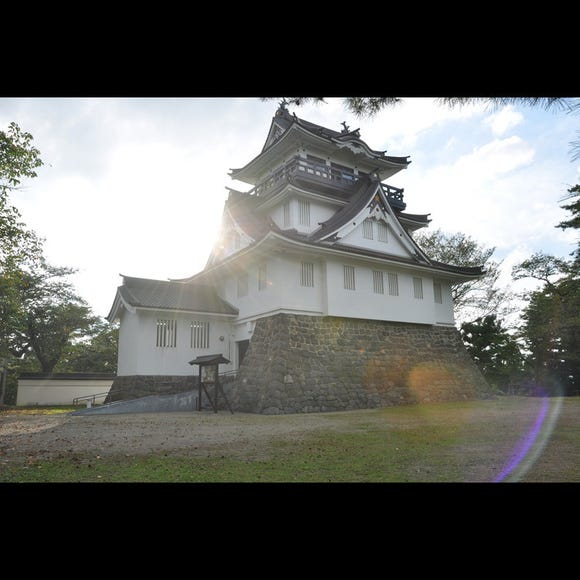
Yokote Park
Parks
Surrounding Areas Of Akita
-
Ad

Just one stop from Haneda Airport! "Truly Japanese!" Food, Fun, and Knowledge Gather at HICityⓇ Enjoy An Electrifying Night at "Japan Night Fever: Haneda Innovation City"
by: Yohei Kato
-
Ad

Advice from the Experts at Hitohira: Here's How to Choose the Best Japanese Knife
-

Shopping in Akita: 11 Must-Buy Souvenirs & Where to Shop Near the Station and Airport
by: ShiroKu inc.
-

Dining in Yamagata: Must-Try Foods & Top Restaurants Near the Station
by: ShiroKu inc.
-

Smart Ways to Avoid Crowds and Enjoy a Safe, Comfortable Trip to Myoko, Niigata Prefecture.
-
Ad

Why Fukushima is the Next Big Food Destination in Japan The Foodie Paradise Only 90 Minutes from Tokyo
-

We Try Mapo Yakisoba - Sendai's Irresistible Spicy Noodle Specialty
-

Autumn in Japan 2025: Fall Foliage Forecast & Where to Enjoy the Colorful Leaves (+Tour Info)
-

10 Must-Visit Places for Autumn Leaves in Tohoku: Naruko Gorge, Geibikei Gorge & More (2025)
by: Guest Contributor
-

Morioka's 'Three Great Noodles': A Gourmet's Guide to Taste, Tradition, and Must-Visit Eateries
-

Top 10 Japanese Rice Crackers & Snacks by Kameda Seika - Japan’s Leading Rice Snack Maker!
-

(Video) Walking Tour along Narita Omotesando - Quaint Historical Village near Narita Airport!
by: Victor Gonzalez












